
Written by: Elizabeth Miller | Last updated: 08 August 2023 | Fact check by : Robert Moore
FreeCell Solitaire gives you more freedom and possibilities than most other Solitaire games. You not only get to see all of the cards as they are kept face up, but you can easily move up to 4 cards to the four free cells to help you make moves. So this guide will help you understand how this card game is played and make it easy to win each game.
You can experience the game by playing free FreeCell Solitaire and its many exciting variations here on Solitairea.com, such as:
Double FreeCell
Three Deck FreeCell
Four Deck FreeCell
Eight Off
Baker's Game
You don't need to download or register, and you can take advantage of helpful features like hints, undo, and redo moves. Customize the design of the cards, keep track of your win rate, and even change the background colour when you play on our website. For the most immersive experience, try to play in full-screen mode.
Classic FreeCell Solitaire is played with a standard 52-card deck and is a modification of Baker's Game. The critical difference is that in FreeCell, the playing cards are built by alternating colours. This contrasts the Baker's Solitaire Game, where they're built by suit.
Almost all FreeCell games are winnable, with a few rare exceptions. Card ranks in FreeCell range from Ace to King, with both the suits and ranks playing crucial gameplay roles. Let us try to understand the setup and how you can begin playing this wonderful card game.
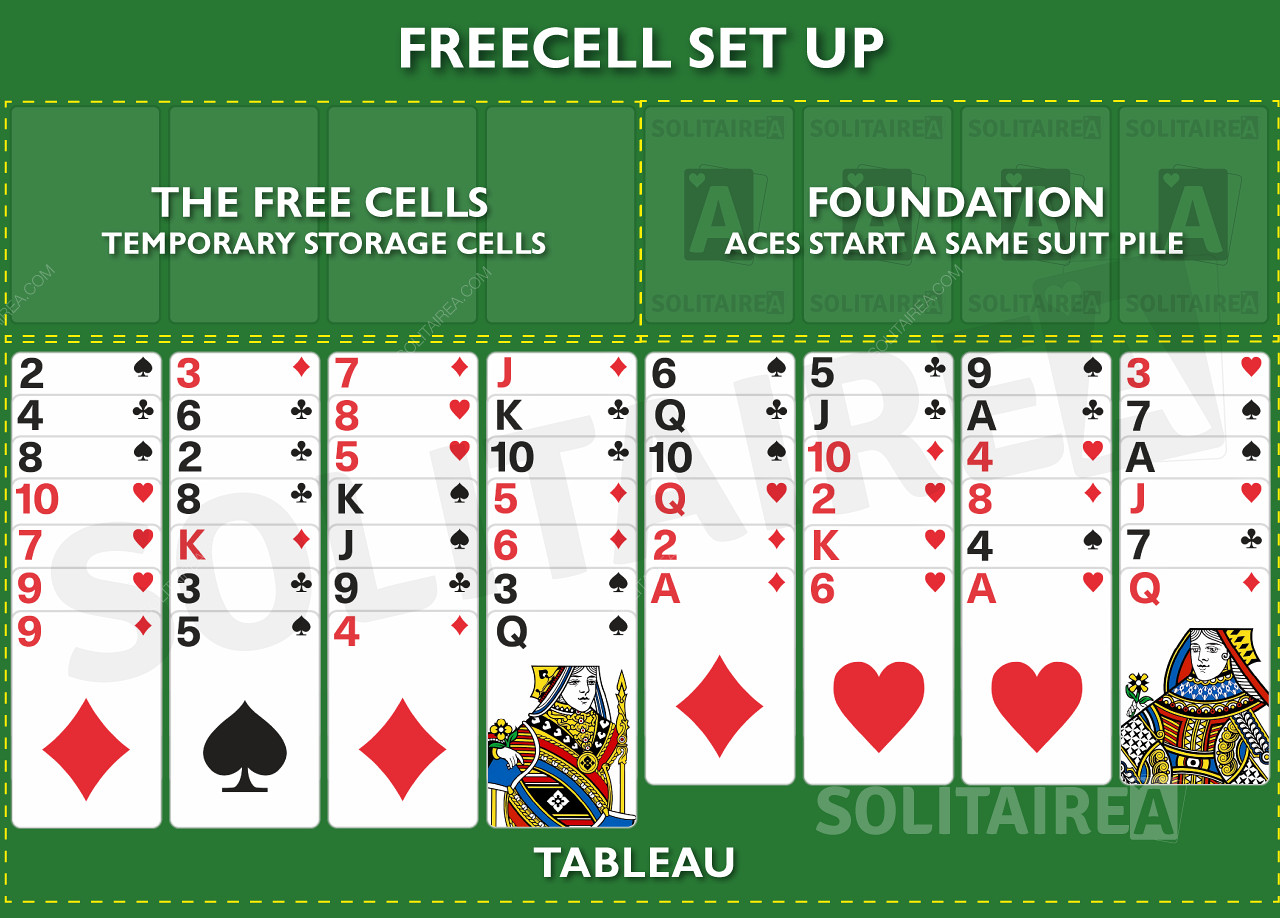
How to set up a game of FreeCell Solitaire
The FreeCell game starts with eight columns of cards, with the first four having seven cards each and the last four having six. All cards forming the tableau are dealt face-up. Your gameplay objective as a player is to move the cards to the home cells or foundations, as they are called, where each suit is ordered from Ace to King.
Use the free cells as temporary holders for the last card in a tableau column when necessary.
In FreeCell Solitaire, there are three types of piles:
The Free Cells: These four piles are temporary placeholders where you can place any card you want.
The Foundations: These four piles are where you build up each suit from Ace to King.
The Tableau: Comprising eight piles, this is the main playing area where the game begins.
As you can see, the FreeCell Solitaire game feels very similar to what you see in other classic card games like Klondike.
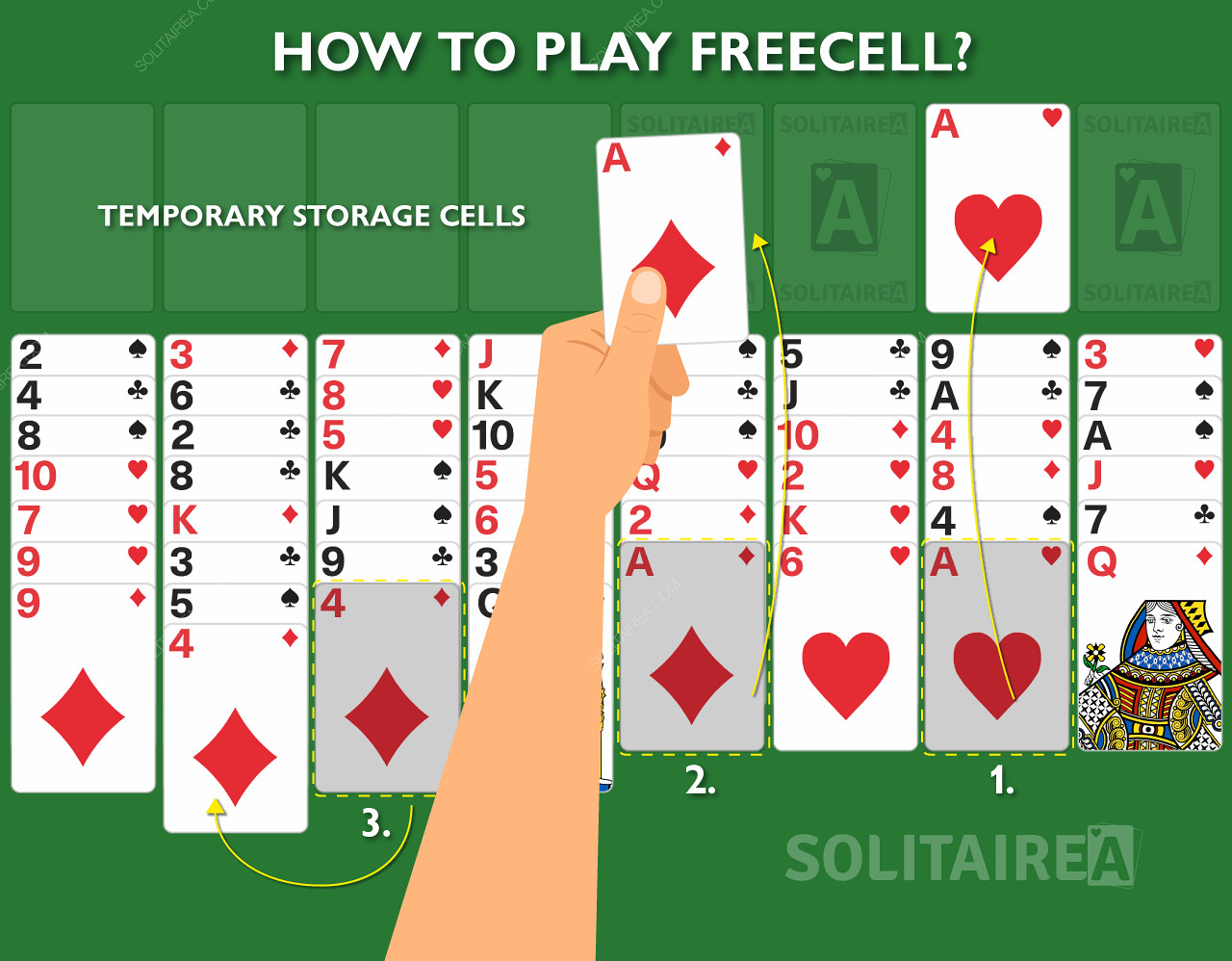
How playing FreeCell Solitaire works
Combining luck and strategy, the FreeCell Solitaire games challenge you to use the available cards and plan several moves. With four free cells on the left (most of the time) and four home cells on the right (most of the time), the objective is to move all cards to the home cells.
You can move any uncovered card at the bottom of the tableau, adhering to specific rules (explained below) when moving cards to the foundation, free cells, or other tableau columns.
In the image above, you can see (1,2) that Aces start a same-suit foundation pile, and it is the only card that can initially be moved there. Cards sorted from Ace to King in alternating colours can also be moved as visualized (3). In simple words, you can place a card on top of the other if it is the next lowest card and is of the opposite colour. For instance, a 3 of Hearts can easily be placed on a 4 of Spades.
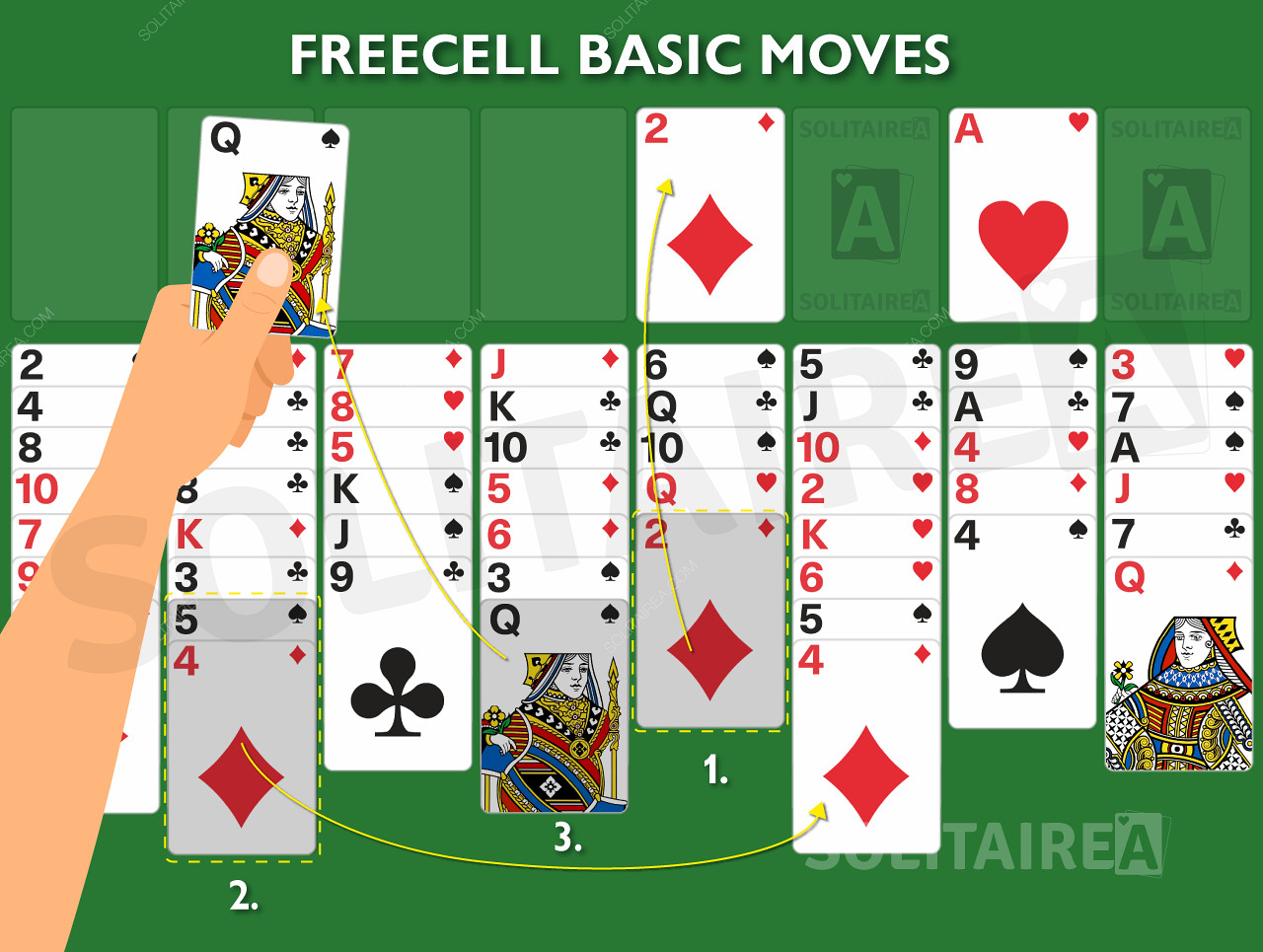
Gameplay image showing the basic rules in action
Following are the basic FreeCell rules you should know before playing:
To increase your chances of winning in most solitaire games based on the FreeCell ruleset, follow these seven expert player tips and tricks:
In the example below, you'll see how more advanced moves are taking place. Let's explain what happens as we plan our way through these expert moves:
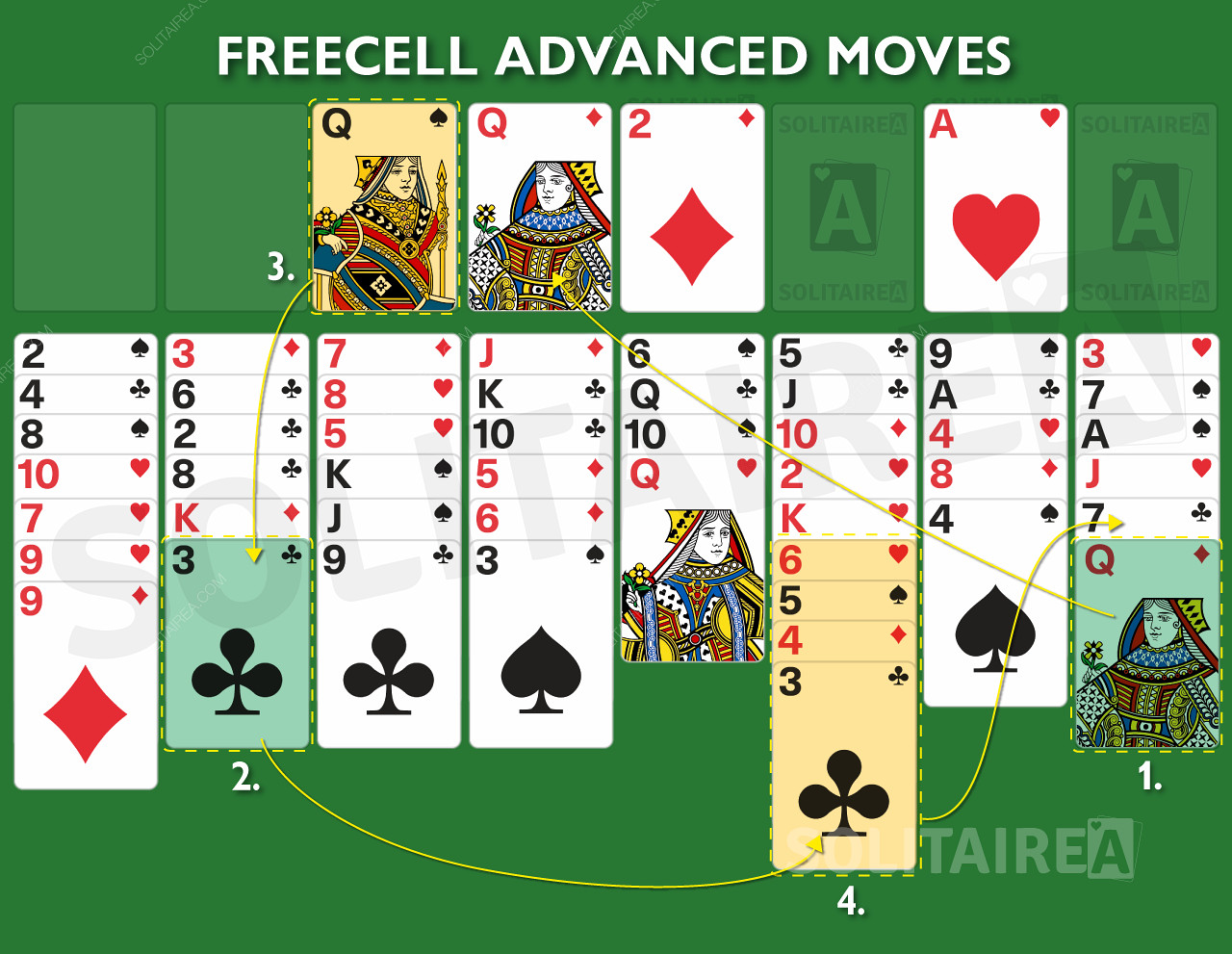
Advanced moves and strategy for this card game
These moves highlight the importance of thinking ahead in the game, especially the use of the free cells needs to be carefully considered such that you do not get stuck.
In the image below, you'll see an advanced strategy for releasing a trapped/buried Ace.
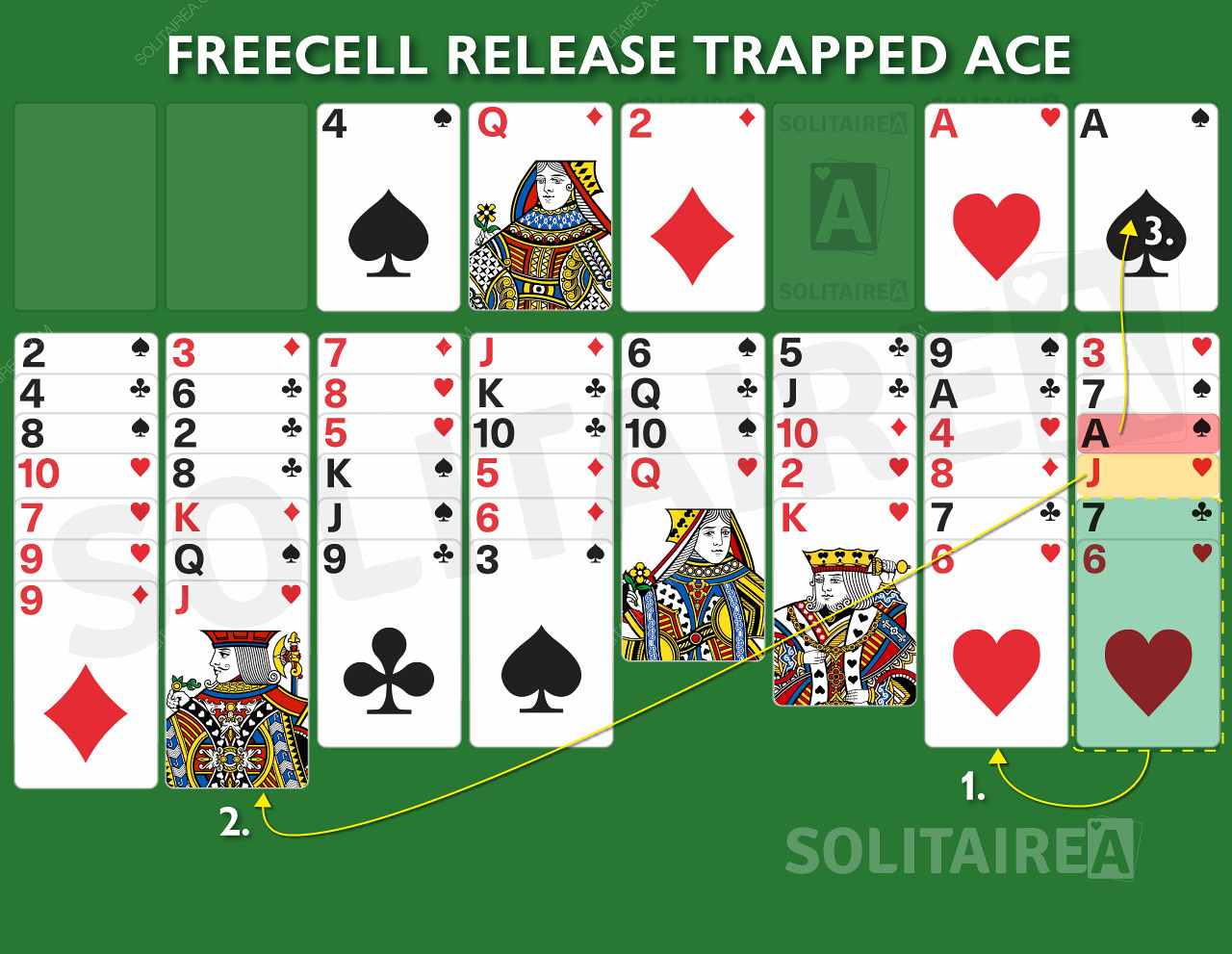
FreeCell advanced moves to release a trapped Ace!
As shown above, you can focus on releasing the Ace cards so that progress can be made. If you keep your Aces trapped, then it will become impossible to win the game.
Paul Alfille, working at the University of Illinois, invented the FreeCell game in 1978 and created the first computerized version. Over time, several variations emerged, with the Classic version being the most popular today. So FreeCell is a relatively new variant of Solitaire. However, it has become one of the most popular card games because of its high win rate and simpler gameplay.
The ultimate goal for players of FreeCell Solitaire is to build up all four suits in the foundations, each in order from Ace to King. It is not easy to win the game, especially as someone who is still learning to play. Don’t be afraid to make mistakes, and use the undo button as often as you want. Try different ideas and see what happens.
The more you experiment, the easier it will be to get used to recognizing patterns and start making the correct moves naturally. Obviously, we here at Solitairea.com are always ready to give you useful tips and clarify your doubts.
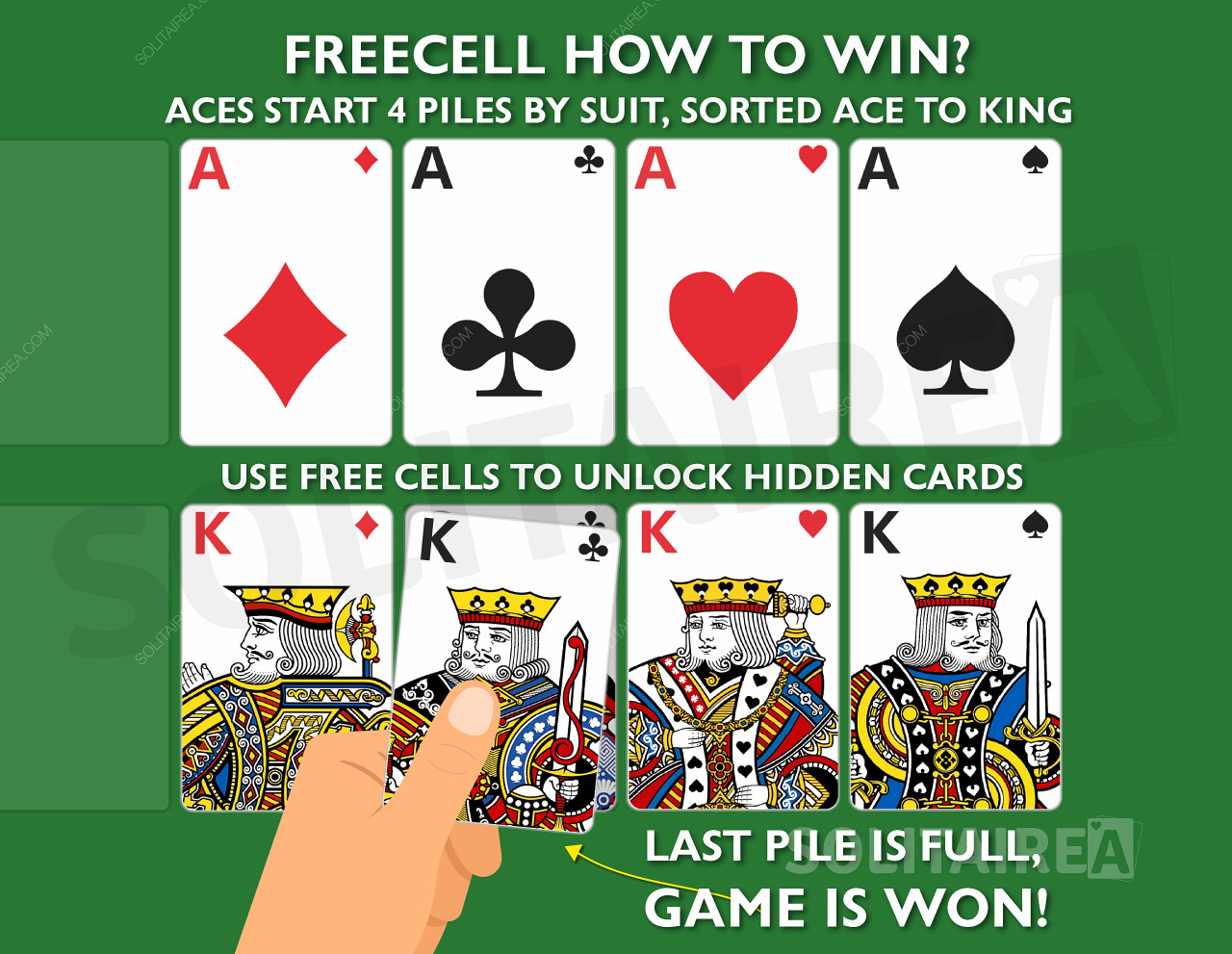
How to win the game? Complete the 4 piles of same suited cards, sorted Ace to Kings.
BACK TO TABLE OF CONTENTS
Here are the most asked questions about FreeCell card game from our readers and players:
Spider Solitaire Online and Classic Solitaire (Klondike) are top-rated card games you can play against yourself. They are categorized as patience games, just like FreeCell Solitaire.
Yes, there are different versions of FreeCell Solitaire with varying numbers of free cells, columns, and decks. Some variants use two decks of cards, while others change the number of columns or free cells to increase the challenge. Baker's game is also an option for you to play.
This is not a myth because almost every FreeCell game you play online is winnable, with only a few exceptions. It will still take strategy and focus on obtaining the win because just one mistake can result in a loss.
FreeCell Solitaire is worth trying for its fun and brain-training aspects. As a regular player, it helps you improve critical thinking, strategic thinking, and problem-solving skills. Researchers have even found that playing FreeCell can distinguish between individuals with memory issues and cognitively healthy seniors when paired with cognitive performance assessment algorithms.
Paul Alfille introduced FreeCell in 1978 while at the University of Illinois. It gained popularity in 1991 when it came preinstalled on Windows computers. There are 1.75 x 10^64 possible games, making it impossible to learn all the deals.
FreeCell is beneficial for the brain, as it promotes problem-solving, critical thinking, and strategic thinking skills. Additionally, a study by the Oregon Center for Aging & Technology found that playing FreeCell can help identify individuals with memory problems.
The minimum number of moves required to beat a FreeCell game varies depending on the cards dealt. However, based on an analysis of thousands of games, it's possible to win with a minimum of 48 moves in some cases. Now that you understand FreeCell Solitaire, play on Solitairea.com to enjoy this classic game and its many variations. Experience the thrill of the challenge and reap the cognitive benefits while having a great time.